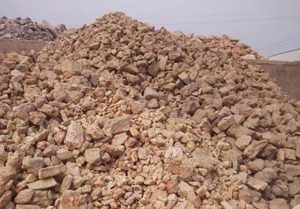Refractory materials have different classifications according to different classification standards. Specifically, it can be divided into alkaline, neutral and acidic refractory materials according to different chemical properties; according to different supply forms, it can be divided into shaped refractory materials and unshaped refractory materials; according to whether it has been fired, it can be divided into fired and unfired refractory materials ; It can also be divided into: silica refractory material, aluminosilicate refractory material, magnesium refractory material, carbon composite refractory material, etc. according to the chemical composition of the refractory material.
The complexity and harshness of the working conditions of refractory materials determine that different performance requirements for refractory materials are required according to different use environments, including their resistance to temperature damage, thermal stress damage resistance and environmental medium erosion resistance.
Due to the large differences in the physical and chemical properties of various refractory materials, appropriate refractory materials should be selected in combination with the characteristics of the reactor, working environment and specific uses. For fluidized bed gasifiers, the damage of lining refractory materials is mainly divided into three categories: chemical erosion, thermal erosion, and mechanical erosion. Chemical erosion will lead to the reduction of the structural properties of refractory materials, and then increase the impact of thermodynamic erosion and mechanical erosion on the wear resistance of materials.
The choice of materials should be fully combined with the characteristics of the process. Usually, the physical and chemical indicators that need to be paid attention to when selecting materials include compressive and flexural strength, wear resistance and thermal shock stability, and re-firing linear variability, etc. When the material selected under the reaction condition, if the castable does not reach the required sintering temperature, the strength will be greatly reduced. First of all, it is necessary to ensure that the selected refractory material has good strength at the working temperature, or bake to Reach the sintering temperature of the material to ensure the high strength of the material during operation. In addition, unreasonable refractory materials in the process of production, installation and oven will also lead to damage to refractory materials. Therefore, it is necessary to ensure that the manufacturer strictly follows the design requirements during the construction process, and at the same time ensures that the entire process meets the material construction requirements proposed by the refractory manufacturer. Ensure that the moisture contained in the material is completely converted into water vapor to escape, so as to avoid the lining delamination, collapse, and furnace lining collapse due to the water vapor pressure in the refractory material exceeding the tensile strength of the material after the furnace is ignited and running.



